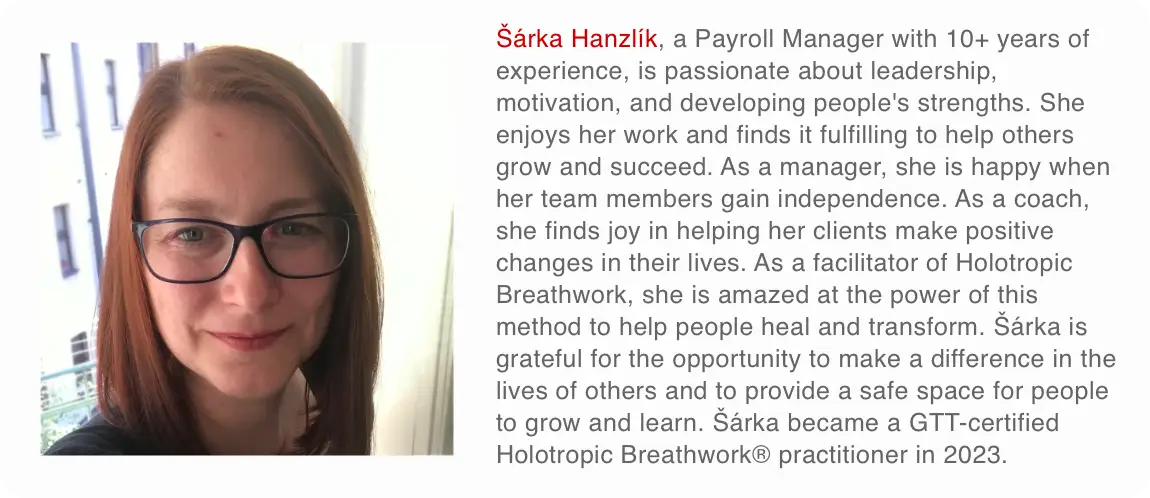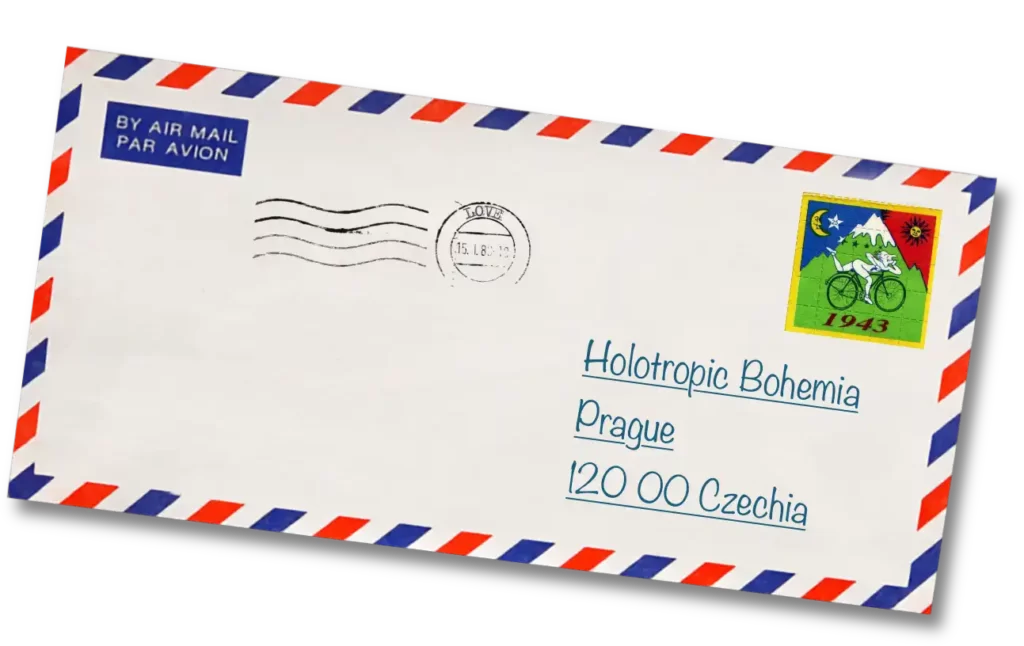A Centrum Prague
Event Details
We cordially invite you to join us for a Holotropic Breathwork workshop in Prague. We will gather in a group of around 14 participants. Since our workshops
Event Details
We cordially invite you to join us for a Holotropic Breathwork workshop in Prague. We will gather in a group of around 14 participants. Since our workshops often attract international attendees, we always ensure that everyone fully understands and is understood.
This is a NON-RESIDENTIAL workshop. Standard accommodation is not included, but there are abundant lodging options in Prague.
For a limited number of participants, simple sleepover accommodation is available on mattresses in a common space directly at the workshop venue.
This 1.5-day experiential Holotropic Breathwork weekend workshop offers an opportunity for self-healing and self-exploration, allowing you to access the roots of emotional and psychosomatic challenges you may face. During the workshop, you will participate in two breathwork sessions—one as a breather and one as a sitter—in a very safe setting. These sessions enable you to access expanded states of consciousness, where your own wisdom connects with your inner healing and transformative power. This healing wisdom guides the experience toward aspects that carry an emotional charge and are ready to be processed or integrated.
Holotropic Breathwork might be of interest if:
● you are seeking a more experiential approach to healing, one that goes beyond talk therapy
● you are experiencing a major life crisis and seeking deep wisdom and insights
● you want to release unresolved issues from the past
● you want to understand the emotional roots of a persistent physical/psychosomatic condition
● you are yearning for deeper insight into the nature of reality and advancement on your spiritual path
● you want to facilitate the integration of a difficult psychedelic session
● you want to spark an authentic creative impulse and nurture artistic inspiration
● you have a feeling of an uninterestingly lived life
We will start on Friday at 18:00, and finish on Saturday around 20:30.
KINDLY MAKE SURE THAT YOU CAN ATTEND THE ENTIRE WORKSHOP, FROM BEGINNING TO END.
In case you have any serious health issues (physical or mental), please contact the organizer in advance to rule out possible contraindications.
More on the topic of Holotropic Breathwork and the Grof Transpersonal Training organisation HERE
You can subscribe to our mailing list for workshop announcements HERE
Time
Workshop Cost
CZK 3.500.- | EUR 150.-
If you are strongly motivated to attend the workshop but your financial situation does not allow you to do so under the given conditions, you can contact us to discuss the possibility of an individual solution.






